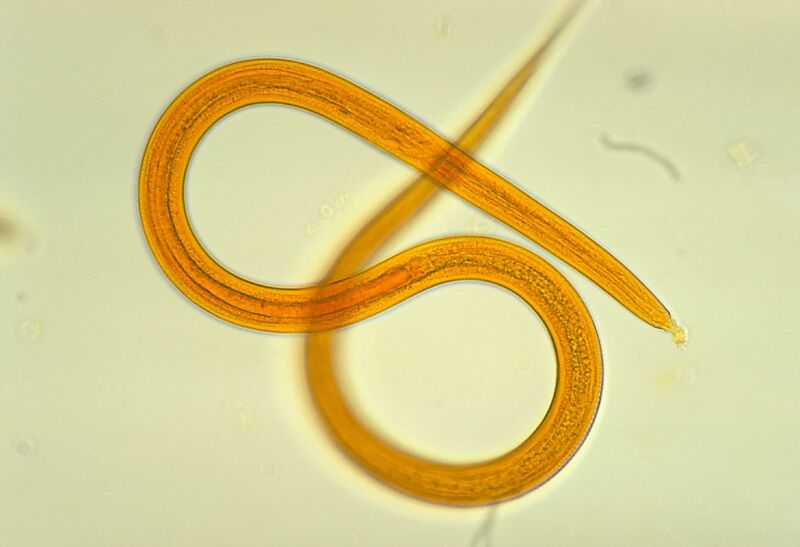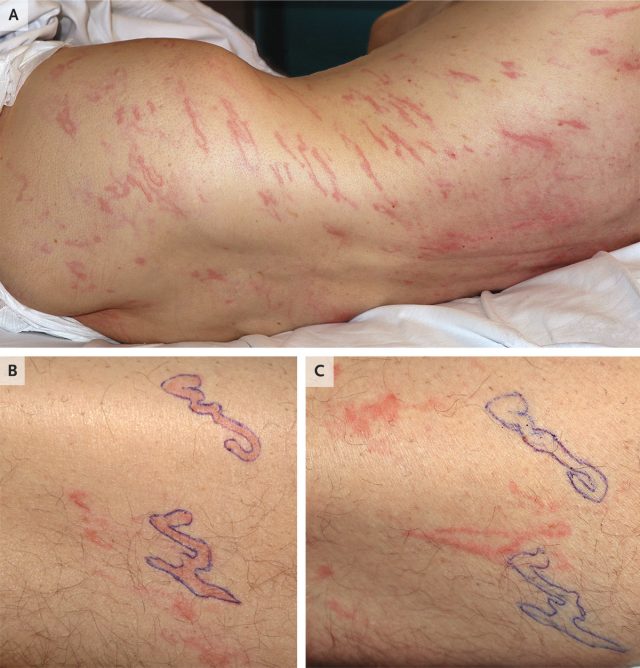
A man in Spain was diagnosed with an unusual roundworm after doctors saw an army of worms under his skin.
Doctors reported the man's rare hyperinfection this week in the New England Journal of Medicine, showing the unusual sight of a wriggling, sliding skin rash that tracked the movements of individual parasites. The official diagnosis was a larva from Strongyloides.
The unfortunate patient appeared to have a perfect storm of risk factors that led to the unpleasant and uncommon infection. The man who worked in sewage management was previously diagnosed with lung cancer. Doctors had noted bouts where he had high levels of disease-fighting white blood cells, which can be an indicator of a parasites.
The man was in the hospital because of a growth on his spine. Doctors had treated him with a high dose of glucocorticoid, which suppresses some immune responses and creates prime conditions for parasites to flourish.
Advertisement
What appears to have happened in the cancer patient is the most disturbing cycle. The problems began with a raised, itchy rash. The red, wavy skin on his body began in his perianal region and spread all over his body. The doctors noted that the red squiggles had moved after they wrote them on his skin with a pen.
The diagnosis was made by the shifting rash and the identification of Strongyloides stercoralis in a stool exam. Doctors prescribed the man an anti-parasitic drug.